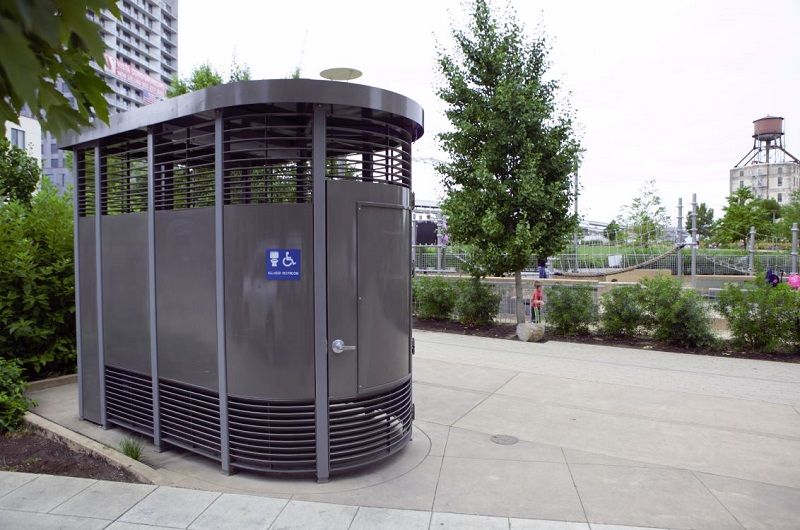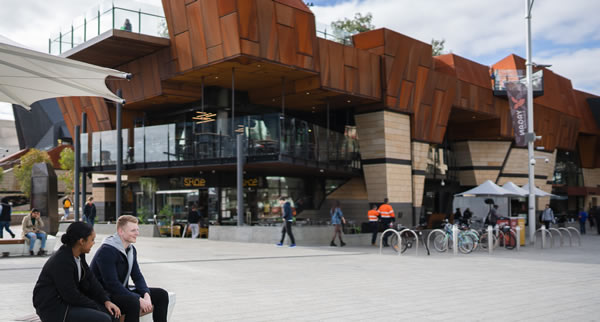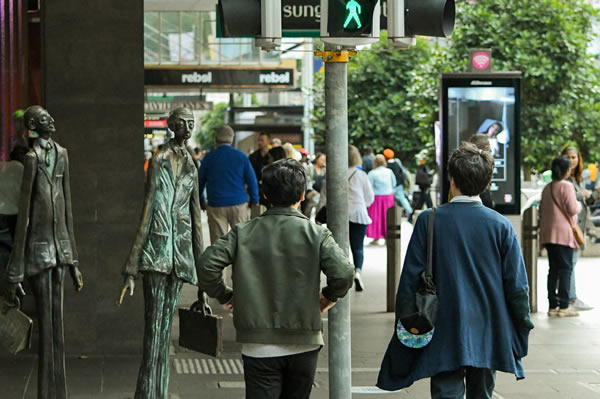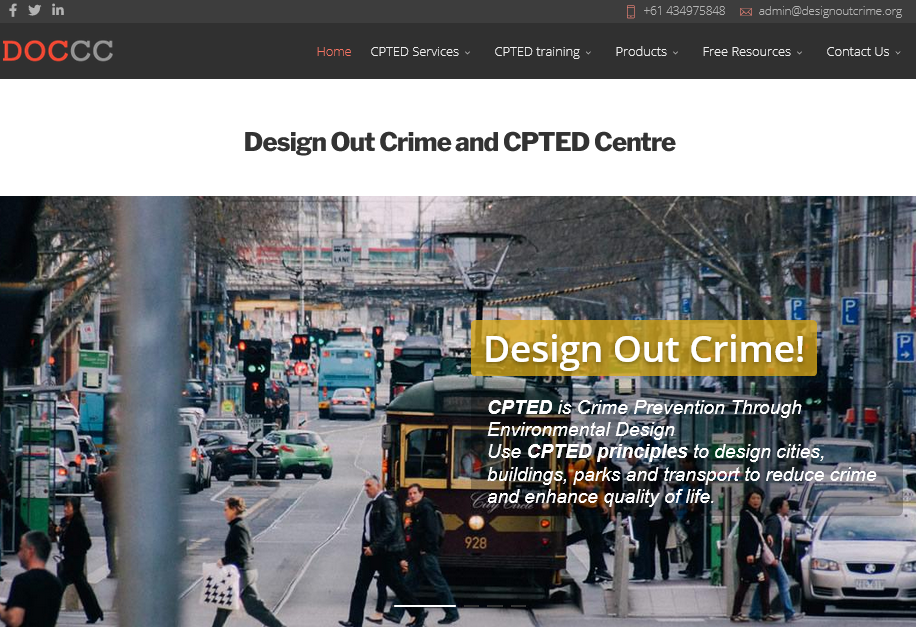Hello,
Welcome to Doc-Gram! For great information on Crime Prevention through Environmental Design (CPTED) and Designing Out Crime plus cyber-CPTED (CPTED + cyber-security).
Highlights:
1. CPTED and public toilet design for streets and parks
2. CPTED and Development Policies and Guidelines
3. Some examples of CyberCPTED crimes
4. Using CPTED in urban slums, favelas and informal housing
5. New project: 'CPTED solutions for chronic city centre issues'
6. Free CPTED resources

CPTED and Public Toilet Design for Streets and Parks
There are many kinds of public toilets - from luxurious toilets with personal ttendants in executive suites all the way to street toilets in rundown 60s transport hubs.
The most difficult public toilets to design are those public toilets for streets and parks.
Stret and park public toilets have to cater for everyone: mums and dads, children, workers, cyclists, shoppers, tourists, homeless and street present, diabetics, people with a disability ...
They have to ensure low crime, be clean and pleasant to use, available 24/7, and look classy whilst being be cheap to buy, clean and maintain...
We provide a detailed resource on best practice using CPTED to design public toilets for streets anfd parks here.
https://designoutcrime.org/index.php/free-resources/public-toilets-for-urban-streets-and-parks/edit/51

CPTED and Development - 2 Pathways
CPTED offers opportunities for developers to reduce crime in four areas of the environment:
-
Construction details of the built environment (buildings, roads, parks etc.)
- Community development and support in the social realm (community buildings, youth work, youth centres, community services, social services etc.)
-
Health, sustainability and economics
-
Digital elements of the environment (Smart Cities, Smart homes, digital lives, smart roads, smart infrastructure, tele-work, etc. )
This requires approapriate processes for including CPTED at different levels of development.
We have identified 2 distinct pathways of CPTED analysis - one for large complex developments and the other for smaller developments.
For more details see the LinkedIn article at:
https://www.linkedin.com/pulse/cpted-development-policies-dr-terence-love/

Examples of CyberCPTED crimes
In a previous DOC-Gram we introduced the new crime prevention field of CyberCPTED which we have been working on for the last 5 years.
Some people haveasked for examples of CyberCPTED crimes that combine the physical and cyber in ways not addressed well by either conventional crime prevention or cyber security.
First, to recap, these new forms of crime are enabled by the rapid recent increase of computers and other IT in everyone's lives.
This includes smart phones, social media, Smart Homes, Smart Cities, Smart Roads Smart Cars, the Internet of Things, Big Data, Smart Health and, in the background, the important but usually hidden world of huge computer-controlled systems that enable us to have clean water, electricity, gas, petrol, sewage, rubbish removal as well as the mass production and distribution of products.
As a brief example of the scale of personal data collection, companies providing advertising in the US claim to have around 5000 different aspects of personal information about almost every American of voting age.
All of the above systems and information can be weaponised by criminals in new forms of crime that are not addressed well by cyber-security or physical crime prevention methods such as CPTED, and hence the need for CyberCPTED.
Some examples of these new types of crime include:
-
Stealing from shops by tricking credit card readers using carefully-timed physical swap of cards
- Burglary by using electronic door lock code readers
- Stealing cars by physically tricking the electronic keys
- Reversing the use of home video security to know what valuables are in a house and when is the best time to burgle it
- Public distribution of personal information to harm the individuals concerned
- Misuse of medical data for profit
- Breaking the anonymity of census data to send targeted advertising and voting messages
- Creating a false Twitter storm to destroy someones life
- Robbing shops by using the CCTV feed to identify security weaknesses
- Large-scale water theft by modifying electronic measuring equipment
- Creating alibis by false number plate trail in number plate readers
- Burglary whose sole intent is to get the electronic car keys
The above are a sample of relatively low tech CyberCPTRED crimes there are also high tech versions of the above that similarly depend on mixing electronic-physical elements to undertake crimes
If you are interested in knowing more, or for training in CyberCPTED, please contact us at the Design Out Crime and CPTED Centre at:
https://www.designoutcrime.org

Using CPTED in Urban Slums, Favelas & Informal Developments
The sucessful use of CPTED extends from the wealthiest to the poorest locations.
Of particular interest is effective community-based CPTED in some of the poorer parts of the world.
In poorer areas, traditional crime prevention by policing and security services is typically almost completely absent.
This is even more so in informal residential and industrial environments that in many ways do not officially exist.
CPTED is increasingly adopted in Rio de Janeiro favelas in Brazil.
Favelas are large-scale informal housing (used to be called slums) in which state intervention is low. Fevalas are typically self-managed, most notoriously, in some cases,by criminal organisations.
Community journalists at RioOnWatch describe ways CPTED is becoming more widely used in favelas to make them safer and improve quality of life.
An overview of the ways CPTED is being used informally and successfully in Rio's favelas is at http://www.rioonwatch.org/?p=37155
RioOnWatch journalists also describe the way that CPTED has been adopted by those involved in the new community professional practice of tactical urbanism http://www.rioonwatch.org/?p=37950
Tactical urbanism is a low cost way of changing urban local environments.
It emerged in the last 10 years primarily from urban planning students in the US and follows the principles embedded in 2nd Generation CPTED. A key intention of tactical urbanism is to encourage citizen participation in shaping urban spaces independently of official processes. CPTED is a natural fit with such citizen-based interventions for crime reduction.

CPTED solutions for chronic city centre issues
We are this week starting a new CPTED research program focusing on chronic city centre issues of crime and anti-social behaviour.
Of special interest are those situations that Community Safety staff, Police and government official find resistant and intractable. These are often the issues that they receive the most complaints from the public. CPTED can often offer special advantages in resolving such situations.
If this is something that you or your colleagues may have an interest, please contact me.

Free CPTED Resources
We provide a large number of free CPTED and CyberCPTED resources on the Design Out Crime and CPTED Centre website at:
https://www.designoutcrime.org
We also provide a large number of CPTED articles via LinkedIn.at
https://www.linkedin.com/in/terencelove/detail/recent-activity/posts/
These free resources are added to each time we undertake research for a project (and we have several topics about to be uploaded).
CPTED Training and CPTED reviews and advice
For CPTED and CyberCPTED training, CPTED reviews for development applications and CPTED and cyberCPTED advice, please see:
www.designoutcrime.org or contact me directly.